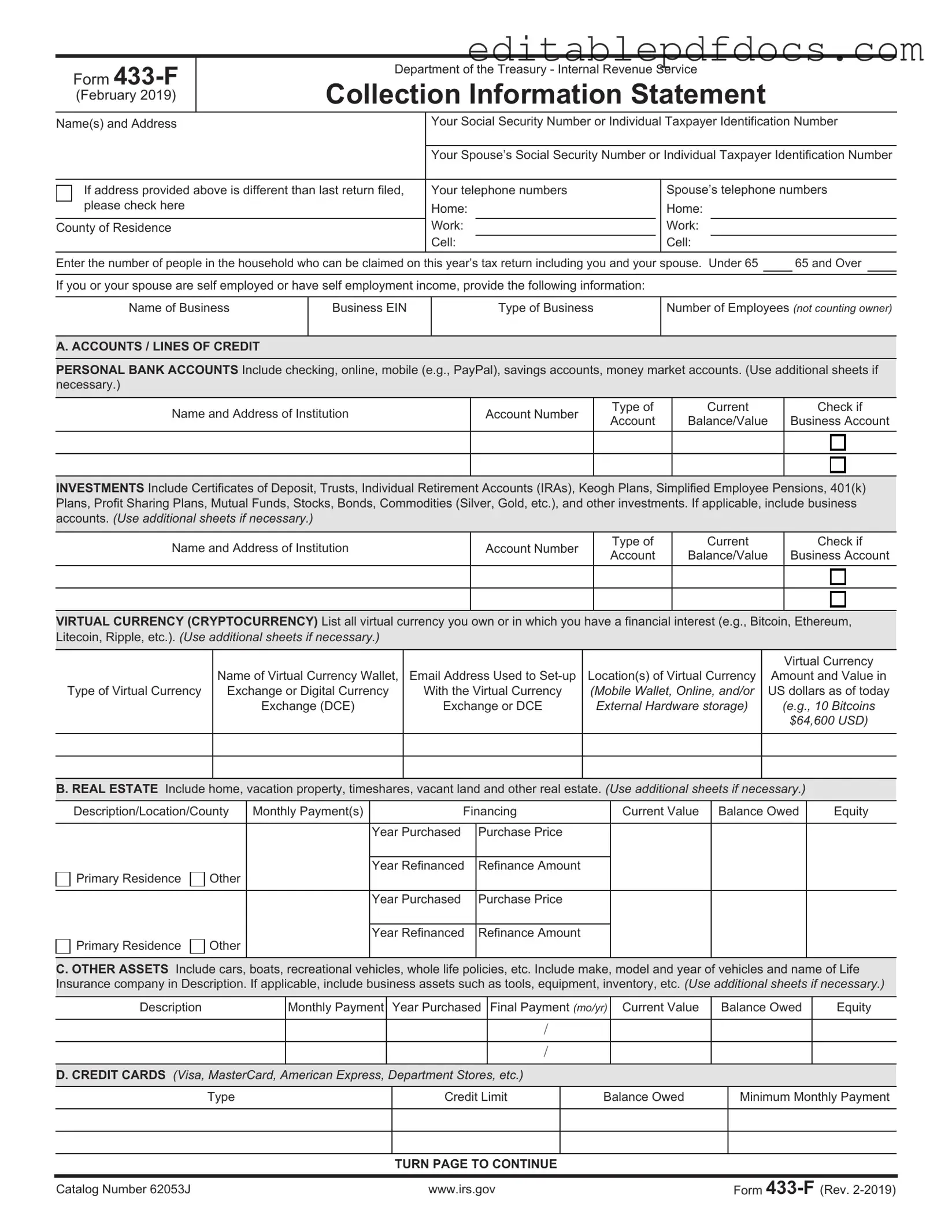Filling out the IRS 433-F form can be a daunting task, and many people make mistakes that can lead to delays or complications in their tax matters. One common error is failing to provide complete and accurate information. When you leave out details or provide incorrect figures, it can create confusion and may result in the IRS rejecting your submission. Always double-check your entries to ensure they are correct.
Another frequent mistake is not including all sources of income. The IRS wants a full picture of your financial situation. If you neglect to report income from side jobs, investments, or other sources, it could lead to penalties or even an audit. Transparency is key when dealing with tax forms.
Some people overlook the importance of documenting their expenses. The IRS 433-F form requires you to outline your monthly living expenses. If you underestimate these costs or fail to provide supporting documents, you risk being seen as less credible. Keep receipts and records handy to substantiate your claims.
Additionally, individuals often forget to sign and date the form. It may seem like a small detail, but an unsigned form is considered incomplete. Make sure to review the entire document before submission to ensure you haven’t missed this crucial step.
Another mistake is miscalculating your assets. The IRS requires a thorough accounting of your assets, including property, savings, and investments. If you undervalue or overvalue these items, it can lead to discrepancies that may complicate your case. Take the time to assess your assets accurately.
Finally, many people fail to follow up after submitting the form. Once you send in the IRS 433-F, it’s important to monitor the status of your submission. Not doing so can lead to missed communications from the IRS, which could further delay your resolution. Stay proactive and check in regularly.
